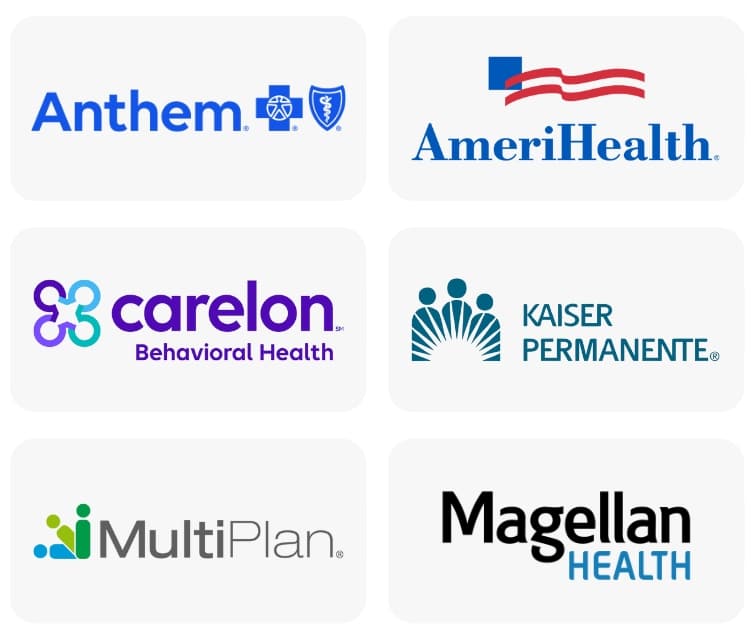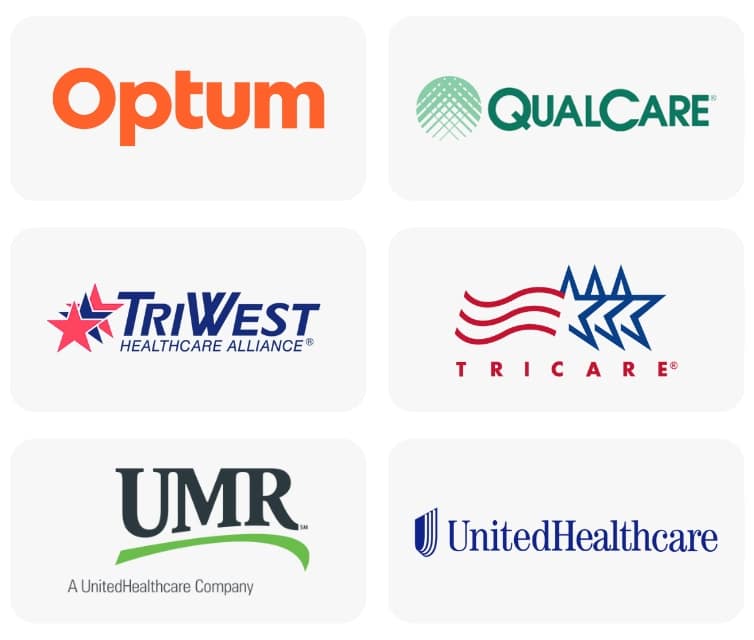Skip To Section
Major depressive disorder is different from the everyday ups and downs in mood that most people experience. People often say, “I’m depressed,” but this is not the same thing as major depression. The symptoms of major depression are persistent and severe and must meet specific behavioral diagnostic criteria listed in the American Psychiatric Association’s diagnostic manual, the DSM-5. For a diagnosis of major depressive disorder (MDD), you have to satisfy at least five of nine potential diagnostic criteria that occur together over at least a two-week period. MDD is debilitating and significantly impacts day-to-day life.
People with depressive disorders have a high risk of substance abuse. Depression and addiction interact in unique ways and worsen the symptoms of one another. When someone has a depressive disorder and a substance use disorder, they cannot be treated separately but together, as a dual diagnosis.

Overview of Depressive Disorders
Previously, the American Psychiatric Association (APA) classified both depression and bipolar disorder as mood disorders. But the latest edition of the DSM-5 places these disorders in separate categories.
All depressive disorders have one thing in common: a sad, irritable, or empty mood. It’s accompanied by other symptoms, which can be visible or invisible to others. These symptoms impact your ability to function.
Two of the disorders in this classification are the most common types of depression:
- Major depressive disorder
- Persistent depressive disorder
What Is Major Depressive Disorder (MDD)?
When most people talk about clinical depression, they mean MDD. This is a formal diagnosis that occurs when you satisfy five of nine diagnostic criteria. At least one of the diagnostic criteria must include either:
- Significant sadness for most of the day, nearly every day over a two-week period
or
- Loss of interest or the inability to experience pleasure most of the day, every day for a two-week period.
MDD is not diagnosed when people have normal, everyday ups and downs. It’s typically not diagnosed when people are suffering from bereavement either. This type of depression comes from losing someone close to you, such as a spouse.
According to the APA, the symptoms of MDD include:
- Profound sadness or decreased mood nearly every day for at least a two-week period
- Displaying a significant decrease in interests nearly every day, or not being able to experience pleasure in things that would normally give you pleasure nearly every day (for at least a two-week period)
- Significant changes in sleeping patterns, such as sleeping too much (hypersomnia) or too little (insomnia)
- Significant changes in appetite or weight, which could be indicated by weight gain or loss without going on a diet or trying to gain weight
- Cognitive problems that can include issues with memory or attention nearly every day for most of the day
- Feelings of fatigue, loss of motivation, or reduced energy that last most of the day
- Significant feelings of irritability or agitation for most of the day
- Feeling as if you are stuck in the mud and/or have significantly slowed thinking abilities
- Significant feelings of guilt and worthlessness or the desire to hurt yourself
For you to be diagnosed with MDD, your symptoms can’t be part of another mental health disorder or a physical health condition. Your depression can’t be the direct result of drug or alcohol use.
Clinicians can diagnose depression on a continuum from mild to severe. Severity depends on the number of symptoms you display and how severe they are. There are no medical tests that can diagnose any depressive disorder. The disorders are diagnosed based on an interview and observations made by a clinician. At least 7% of adults in the U.S. have had at least one major depressive episode. Different groups have higher rates. For example, MDD occurs about twice as often in women as men.
Self-Assessment: Am I Addicted?
"*" indicates required fields
Contact Form
Would you like help?
"*" indicates required fields
What Is Persistent Depressive Disorder (PDD)?
PDD is a more chronic form of depression. Symptoms aren’t as severe, but they last longer. It was formerly referred to as dysthymia.
If you display a depressed mood for most of the day for at least two years, along with other symptoms, you could be diagnosed with PDD. Other symptoms may include:
- Decreased appetite or overeating
- Insomnia (sleeping too little) or hypersomnia (sleeping too much)
- Lethargy or fatigue
- Feelings of low self-worth
- Difficulty concentrating
- Feelings of hopelessness
Persistent depressive disorder isn’t as common as MDD: About 1.5% of U.S adults experienced it in the past year.
Are There Other Depressive Disorders?
The DSM-5 does list other conditions in the depressive disorders category, including:
Disruptive mood dysregulation disorder – This is a syndrome of temper outbursts that don’t match your level of development. They occur at least three times a week. It is most commonly diagnosed in children and has a reported prevalence of about 1% to 3%.
Premenstrual dysphoric disorder – This condition is diagnosed when symptoms occur during the premenstrual cycle and stop around or just after menstruation. It has about a 3% to 8% prevalence rate.
Substance- or medication-induced depressive disorder – This occurs when an individual experiences depression as a side effect of drug use. For example, it may occur during a “comedown” from a stimulant.
Depressive disorder due to another medical condition – This is when depression is tied to a medical condition, such as a stroke or head injury. It’s also important to note that people with depressive disorders are often also diagnosed with other types of mental health disorders. They may include anxiety disorders, eating disorders, and trauma- and attachment-related disorders.
Depression and Addiction: How Are They Connected?
People with MDD or PDD are at an increased risk of substance use disorders. Research studies suggest that 30% to 40% of people with depression will have co-occurring substance abuse.
You might think everyone with co-occurring depression and substance abuse is self-medicating, but researchers suggest an alternative explanation: If you’re vulnerable to developing a mental health disorder, due to genetics, trauma, or another life experience, your risk of developing substance abuse is also higher.
Which Comes First: Depression or Substance Abuse?
When it comes to depression and addiction, either one can come first. If genetics and life experience are at play, both depression and addiction could occur at roughly the same time.
In many cases, depressed people do self-medicate with drugs or alcohol. Children may begin using drugs or alcohol before they learn what depression is, much less how to treat it. Other people may refuse professional help for depression and choose to self-medicate with substances. In many other cases, people begin abusing substances and go on to develop depression. This could result from losing friends, missing out on enjoyed activities to use drugs instead, and job loss or legal problems that come with substance abuse. Depression can also be a side effect of some substances, such as when coming down from a meth or cocaine high. In this case, a diagnosis of substance-induced depressive disorder may be appropriate.
You Can Get Help for Both Depression and Addiction
The following substances are commonly abused by people with depressive disorders (in order of prevalence):
- Alcohol
- Prescription medications (commonly anxiety medications or prescription pain medications like opioids)
- Marijuana
- Tobacco
- Central nervous system stimulants
The APA, the American Society of Addiction Medicine, and other organizations believe co-occuring disorders should be treated at the same time. This is called dual diagnosis treatment.
Depression cannot be treated effectively when the substance use disorder is not held in check. And addiction cannot be treated if your depression isn’t being managed. One will inevitably lead to a relapse of the other because the two conditions have a direct influence on the other. They can never be fully dealt with unless together. Treatment programs designed for dual diagnosis often incorporate therapy as well as traditional substance abuse elements, like 12-step groups. Treatment plans address both conditions at the same time. They encourage you to learn about the unique ways your diagnoses interact.
How Are They Treated?
In cases of depression and addiction, an integrated treatment program approach is best. An integrated team includes professionals from different disciplines working together. An example would be mental health therapists and nurses. This ensures you’re treated holistically and neither your depression nor your addiction is ignored.
Integrated treatment typically includes:
- Medication-assisted treatment – Medications to treat depression and to address withdrawal symptoms or cravings for the drug of choice may be used.
- Cognitive behavioral therapy (CBT) – This type of therapy is effective for a wide range of mental health conditions, along with substance abuse disorders. It addresses your beliefs and attitudes about yourself and the world. It then restructures them so your beliefs are healthier and more adaptive.
- Support groups – Peer support meetings, like Alcoholics Anonymous (AA) or Narcotics Anonymous (NA), are not run by therapists or other professionals. People dealing with the same things as each other meet to share stories of similar struggles and learn from one another. These groups often have a very structured approach and provide significant support and encouragement to members.
- Alternative therapies – These types of therapies can augment a traditional treatment program. Examples include art therapy, music therapy, and psychodrama.
- Continued treatment – Ongoing participation in treatment is associated with better long-term outcomes. For substance use disorders, you should participate in some type of recovery activity, whether that’s NA or an alumni support group, and you shouldn’t stop! Recovery is considered a lifelong process.
At Footprints to Recovery, our staff is experienced in treating co-occurring disorders. That includes depression and addiction. Don’t think that you can’t get help for your addiction if you suffer from MDD or another type of depressive disorder. We are here for you!
- Depression (Major Depressive Disorder): Symptoms and More
- Diagnostic and Statistical Manual of Mental Disorders (DSM-5®)
- Bereavement-Related Depression
- Depression : CONTINUUM: Lifelong Learning in Neurology
- Major Depression – National Institute of Mental Health (NIMH)
- Persistent Depressive Disorder (Dysthymic Disorder) – National Institute of Mental Health (NIMH)
- Prevalence, comorbidity, and correlates of DSM-5 proposed disruptive mood dysregulation disorder – PubMed
- The prevalence, impairment, impact, and burden of premenstrual dysphoric disorder (PMS/PMDD) – PubMed
- Major depression and comorbid substance use disorders – PubMed
- Kaplan and Sadock’s Synopsis of Psychiatry: Behavioral Sciences/Clinical …
- The ASAM Principles of Addiction Medicine
- Treating Co-Occurring Disorders: A Handbook for Mental Health and Substance Use Professionals
Our admissions team is available 24/7 to listen to your story and help you get started with the next steps.


